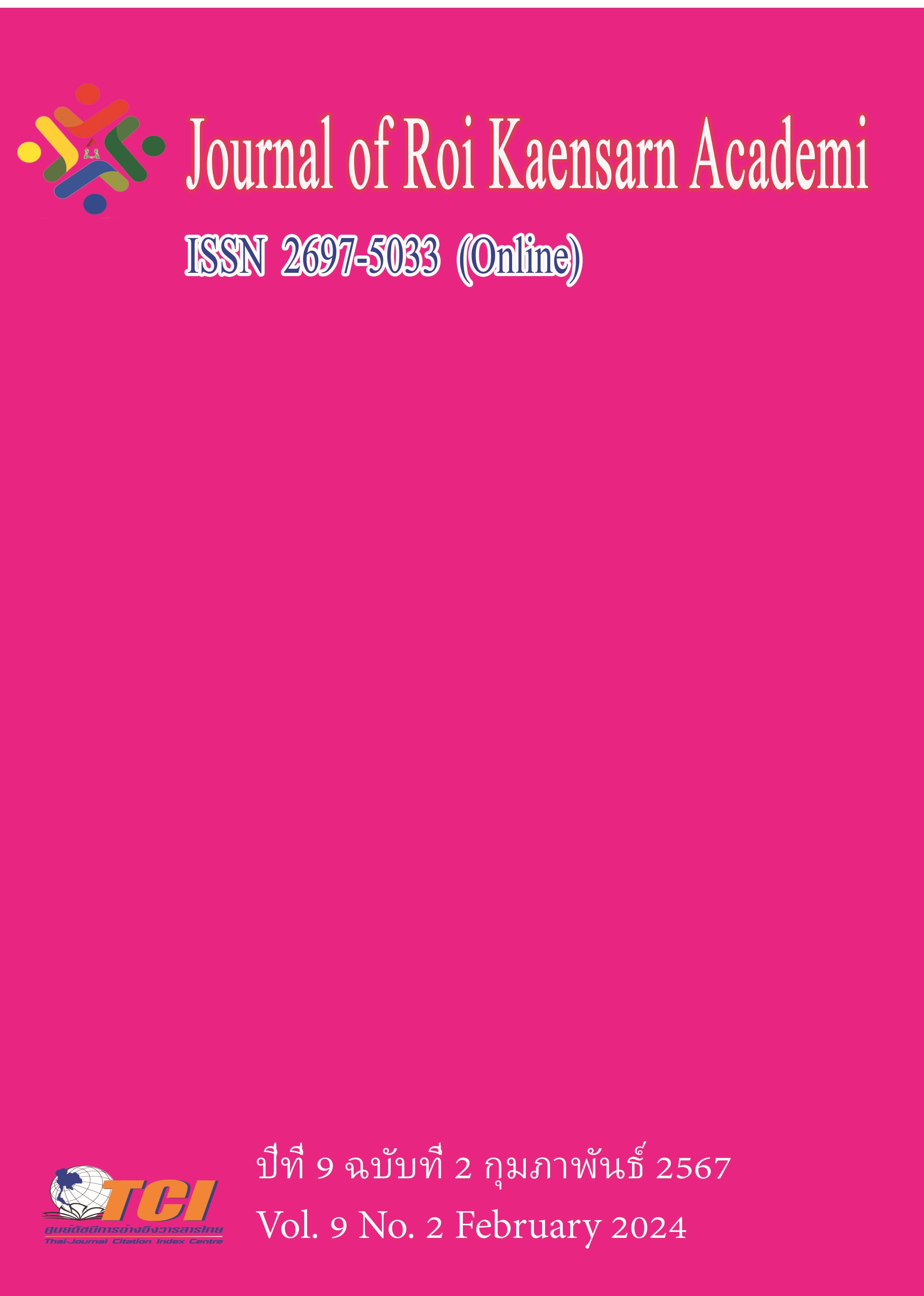Exploring Spodumene as a Key Ingredient to Extend the Usage Life of Shiwan Kiln Earthenware
Main Article Content
บทคัดย่อ
Although Shiwan Kiln pottery is China's intangible cultural heritage, it encounters problems such as seepage, short usage life, due to using quartz sand materials. For these reasons, it is impractical for daily use and has limited application, especially in modern society. The research objectives were to: 1) Improve the anti-leakage properties of Shiwan Kiln pots and 2) make them more durable. This study employed an experimental approach by: 1) Creating nine Kiln pots using the traditional materials composed of quartz sand, mud at high sintering temperature and tested them; 2) Explored and analyzed the properties of bentonite, cordierite, spodumene, and alumina as alternative materials to quartz sand by making Total of 12 samples;3) Selected the most suitable material and created additional 18 samples to test the validity of the material 4) The impact of experimental firing methods on pots.
The results show that after authoritative testing, spodumene ceramics demonstrated low water absorption of 0.3%, excellent thermal shock resistance and environmental compliance; its ceramic strength, density and corrosion resistance increased by 30%, 20% and 20%, respectively. 15%. These results provide a critical scientific basis for the material selection and production process optimization of Shiwan kiln pottery pots, thereby significantly improving the leakage prevention and durability of the products. This research provides new possibilities and a practical basis for technological innovation of Shiwan kiln ceramic production.
Article Details
เอกสารอ้างอิง
Abbott, D. R. (2009). Extensive and Long-Term Specialization: Hohokam Ceramic Production in the Phoenix Basin, Arizona. American Antiquity, 74(3), 531-557.
Bahn, S., Lee, C., Nam, C. S., & Yun, M. H. (2009). Incorporating affective customer needs for luxuriousness into product design attributes. Human Factors and Ergonomics in Manufacturing & Service Industries, 19(2), 105-127.
Carvajal, J. C., & Day, P. M. (2013). Cooking Pots and Islamicization in the Early Medieval Vega of Granada (Al-Andalus, Sixth to Twelfth Centuries). Oxford Journal of Archaeology, 32(4), 433-451.
Colombo, P., Mera, G., Riedel, R., & Soraru, G. D. (2010). Polymer-derived ceramics: 40 years of research and innovation in advanced ceramics. Journal of the American Ceramic Society, 93(7), 1805-1837.
Coutts, H. (2001). The art of ceramics: European ceramic design, 1500-1830. Yale University Press.
Dajun, Q. (n.d.). Guǎngdōng xīn yǔ Guangdong New Language. Zhonghua Book Company.
Hein, A., Müller, N., & Kilikoglou, V. (2009). Great pots on fire: thermal properties of archaeological cooking ware. In Vessels: inside and outside. Proceedings of the conference EMAC.
Jiaren, S. (1995). Lüè lùn sòng yuán shíqí shí wān táocí yìshù de fǎ zhǎn [Brief Discussion on the Development of Shiwan Ceramic Art in Song and Yuan Dynasties]. Journal of Foshan University, (03), 6-13.
Lewin, C. (2005). Elementary quantitative methods. In Research methods in the social sciences (pp. 215-225).
Lingling, C. (1987). Duì fúshān shí wān yáo yè de yánjiū jí qítā [Research on Foshan Shiwan Kiln Industry and Others]. Ceramic Research, (02), 53-56.
Menghan, L. (2017). Zhōngguó chuántǒng gōngyìpǐn jíjǐn: Shí wān táo juǎn [A Collection of Traditional Chinese Crafts: Shiwan Pottery Rolls]. China Science and Technology Press.
Naishen, L., Wen, S., & Hua, Z. (1980). Shí wān táocí de qǐyuán, tèdiǎn jí lìshǐ dìwèi
[The Origin, Characteristics and Historical Position of Shiwan Ceramics]. Journal of Sun Yat-sen University (Social Science Edition), 20(03), 58-70. http://xuebao.sysu.edu.cn/Jweb_skb/CN/abstract/article_11481.shtml
Pierce, C. (2005). Reverse engineering the ceramic cooking pot: cost and performance properties of plain and textured vessels. Journal of Archaeological Method and Theory, 12, 117-157.
Smith, C. (2007). Design for the other 90%. Cooper-Hewitt, National Design Museum. Smithsonian Organization, 47.
Stark, M. T. (2003). Current Issues in Ceramic Ethnoarchaeology. Journal of Archaeological
Research, 11(3), 193-242. http://www.jstor.org/stable/41053198
Weiwen, H. (2015). Lùn míng qīng shí wān yáo “gòng táo”——yǐ qīnggōng jiù cáng shí wān yáo qì wéi zhōngxīn [On the "tribute pottery" of Shiwan kiln in Ming and Qing Dynasties——Centering on the old collection of Shiwan kiln wares in Qing Palace]. Journal of Shenyang Palace Museum, (01), 131-141.
Wenjin, J. (2017). Shí wān yáo yánjiū [Shiwan Kiln Research]. Guangdong People's Publishing House.
Xinliang, L. (2019). Kǒushù shí wān yáo [Oral Shiwan Pottery]. Guangxi Nationalities Publishing House.
Regional Socio-economic Analysis. Development Bank of Southern Africa.
Ray, C. (2000). Endogenous socio-economic development in the European union—issues of evaluation. Journal of Rural Studies. 16 (4), 447-458.
Rietveld, P., & Bruinsma, F. (2012). Is transport infrastructure effective?: transport infrastructure and accessibility: impacts on the space economy: Springer Science & Business Media.
Schwalbe, K. (2009). Introduction to project management: Course Technology Cengage Learning Boston.
Storey, J. (2016). Human resource management: Edward Elgar Publishing Limited.
Wenzel, T. A., Burnham, K. J., Blundell, M. V., & Williams, R. A. (2006). Dual extended Kalman filter for vehicle state and parameter estimation. Vehicle system dynamics, 44 (2), 153-171.
Wilson, F. R., Stevens, A. M., & Holyoke, T. R. (1982). Impact of Transportation on Regional Development (Abridgment). Transportation research record.

